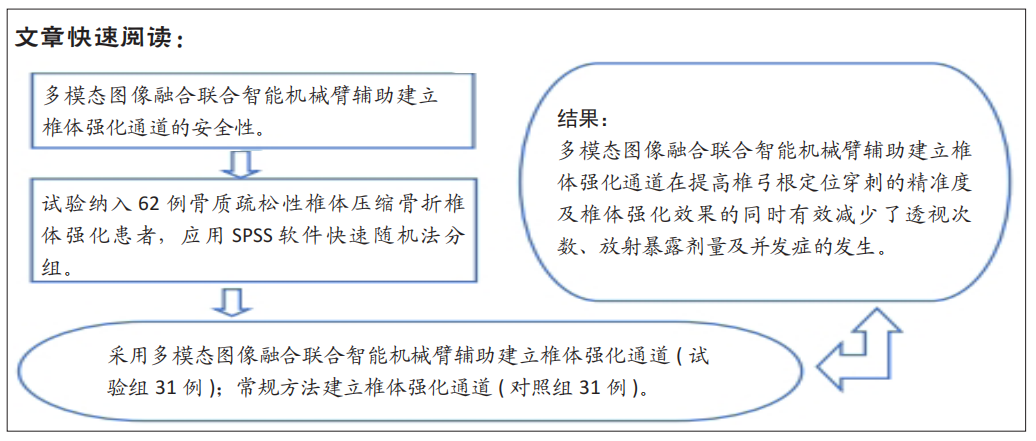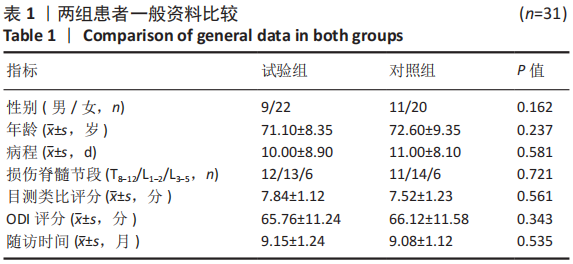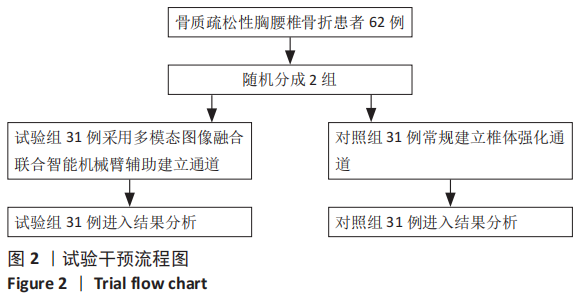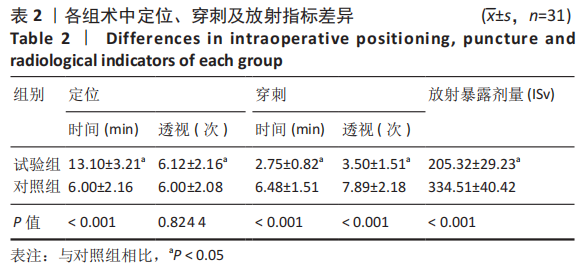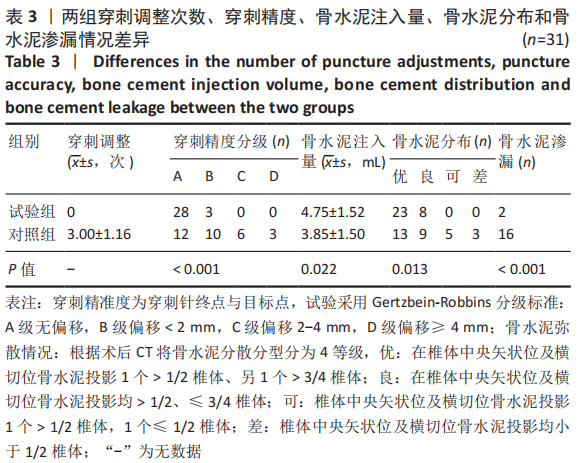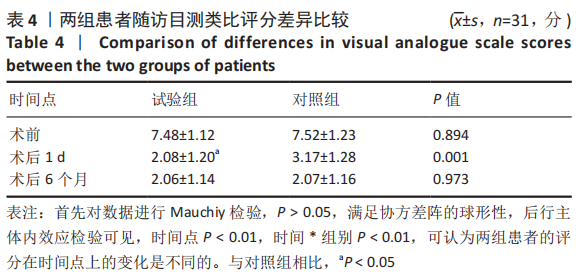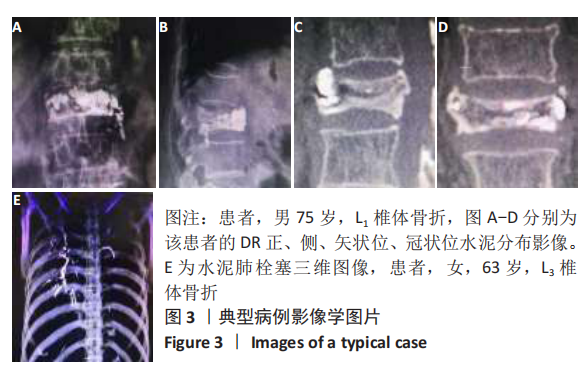[1] IZADPANAH K, KONRAD G, SUDKAMP NP, et al. Computer navigation in balloon kyphoplasty reduces the intraoperative radiation exposure. Spine. 2009;34:1325-1329.
[2] MCGIRT MJ, PARKER SL, WOLINSKY JP, et al. Vertebroplasty and kyphoplasty for the treatment of vertebral compression fractures: an evidenced-based review of the literature. Spine J. 2009;9(6):501-508.
[3] 李惠民,陈银河,申才良,等.经皮椎体后凸成形术治疗骨质疏松性椎体压缩骨折远期并发症的 Meta 分析[J].中国脊柱脊髓杂志, 2017,27(7):592-598.
[4] FANG L, CHEN Z, LIU D, et al. Clinical effect and postoperative follow-up of senile osteoporotic compression fractures undergoing PKP. China Med Pharm. 2017;7(10):177-180.
[5] CHEN WJ, KAO YH, YANG SC, et aI. Impact of cement Ieakage into diskson the deveIopment of adjacent vertebraI compression fractures. J SpinaI Disord Tech. 2010;23(1):35-39.
[6] ZHAN Y, JIANG J, LIAO H, et al. Risk factors for cement leakage after vertebroplasty or kyphoplasty: a meta-analysis of published evidence. World Neurosurg. 2017;(101):633-642.
[7] LIU XW, JIN P, WANG LJ, et al. Vertebroplasty in thetreatment of symptomatic vertebral haemangiomas without neurological deficit. Eur Radiol. 2013;23(9):2575-2581.
[8] 郑鸣迪,魏见伟,鞠仕伟,等.骨质疏松性椎体压缩骨折PVP术后残余疼痛影响因素分析[J].中国骨与关节损伤杂志,2020,35(1):46-48.
[9] 王秀廷,李嗣生,孙健,等.人工智能激光定位系统减少椎体成形定位时间与放射剂量的有效性[J].中国组织工程研究,2020,24(33): 5295-5299.
[10] 崔伟,熊小明,万趸,等.经皮椎体后凸成形术中使用明胶海绵减少骨水泥渗漏的可行性及临床疗效[J].中华创伤杂志,2020,36(10): 899-904.
[11] SUN X, LIU X, WANG J, et al. The effect of early limited activity after bipedicular percutaneous vertebroplasty to treat acute painful osteoporotic vertebral compression fractures. Pain Physician. 2020; 23(1):E31-E40.
[12] 钟远鸣,万通,钟锡锋,等.弯角与单侧椎弓根入路椎体成形治疗骨质疏松性椎体压缩骨折有效性与安全性的Meta分析[J].中国组织工程研究,2021,25(3):456-462.
[13] 蔡碧红.多层螺旋CT三维重建技术在脊柱压缩性骨折内固定术中的应用研究[J].现代医用影像学,2019,28(10):2266-2267.
[14] LIU Z, BLASCH E, XUE Z, et al. Objective assessment of multiresolution image fusion algorithms for context enhancement in night vision: a comparative study. IEEE Trans Pattern Anal Mach Intell. 2012;34(1):94-109.
[15] XU M, CHEN H, VARSHNEY PK. An image fusion approach based on markov random fields. IEEE Trans Geosci Remote Sens. 2011;49(12):5116-5127.
[16] 聂生东,邱建锋,郑建立.医学图像处理[M].上海:复旦大学出版社, 2010.
[17] GERTZBEIN SD, ROBBINS SE. Accuracy of pedicular screw placement in vivo. Spine (Phila Pa 1976). 1990;15(1):11-14.
[18] 赵玉波,张庆明.椎体成形术中骨水泥弥散分布等级的量效关系[J].中国骨与关节损伤杂志,2015,30(1):63-65.
[19] LIEBSCHNER MA, ROSENBERG WS, KEAVENY TM. Effects of bone cement volume and distribution on vertebral stiffness after vertebroplasty. Spine (Phila Pa 1976). 2001;26(14):1547-1554.
[20] ROUSING R, ANDERSEN MO, JESPERSEN SM, et al. Percutaneous veterbroplasty compared to conservative treatment in patients with painful acute or snbacute osteoporotic vertebral fracture:three-month follou-up in a clinical randomized study. Spine. 2009;34(13):1348-1354.
[21] RAHIMIZADEH A. Kyphosis and canal compromise due to refracturing of an L1 cemented vertebra managed with posterior surgery alone. Surg Neurol Int. 2019;10:212.
[22] ALHASHASH M, SHOUSHA M, BARAKAT AS, et al. Effects of olymethylmethacrylate cement viscosity and bone porosity on cement leakage and new vertebral fractures after percutaneous vertebroplasty: a prospective study. Global Spine J. 2019;9(7):754-760.
[23] 杨德顺,雷丙俊,廖亮,等.改良推管在单侧椎弓根穿刺经皮椎体后凸成形的应用[J].中国修复重建外科杂志,2017,31(2):197-202.
[24] KRAUSE WR, MILLER J, NG P. The viscosity of acrylic bone cements. J Biomed Mater Res. 1982;16(3):219-243.
[25] 张雄喆.非牛顿流体的特征与应用[J].中国新通信,2018,20(7):241-242.
[26] LI S, WANG C, SHAN Z, et al. Trabecular microstructure and damage affect cement leakage from the basivertebral foramen during vertebral augmentation. Spine (Phila Pa 1976). 2017;42(16):E939-E948.
[27] ZHANG ZF, HUANG H, CHEN S, et al. Comparison of high- and low-viscosity cement in the treatment of vertebral compression fractures: a systematic review and meta-analysis. Medicine. 2018;97(12):e0184.
[28] WANG Y, HUANG F, CHEN L, et al. Clinical measurement of intravertebral pressure during vertebroplasty and kyphoplasty. Pain Physician. 2013;16(4):E411-E418.
[29] 余俊喜,吴少坚,鲁培荣,等.椎体成形术和椎体后凸成形术术后骨水泥渗漏的临床观察及分析[J].中国现代药物应用,2017,11(16): 66-68.
[30] 郭瑞,文豪,杨利学,等.椎体强化术后骨水泥渗漏并发症与危险因素的研究进展[J].中华创伤杂志,2019,35(1):50-56.
[31] SUN HB, Jing XS, Liu YZ, et al. The optimal volume fraction in percutaneous vertebroplasty evaluated by pain relief,cement dispersion,and cement leakage: a prospective cohort study of 130 patients with painful osteoporotic vertebral compression fracture in the thoracolumbar vertebra. World Neurosurg. 2018;114:e677-e688.
[32] LUO J, DAINES L, CHARALAMBOUS A, et al. Vertebroplasty: only small cement volumes are required to normalize stress distributions on the vertebral bodies. Spine (Phila Pa 1976). 2009;34(26):2865-2873.
[33] FRIBOURG D, TANG C, SRA P, et al. Incidence of subsequent vertebral fracture after kyphoplasty. Spine (Phila Pa 1976). 2004;29(20):2270-2276.
[34] 张静,张楠,郭勇,等.经皮椎体成形术后骨水泥渗漏的影像学评估策略分析[J].武警医学,2020,31(6):464-467.
[35] 麦春华,蔡泽银,邓方跃.经皮椎体成形术后影像学评价[J].临床放射学杂志,2010,29(11):1535-1538.
[36] 王阳萍,杜晓刚,赵庶阳,等.医学影像图像处理[M].北京:清华大学出版社,2010.
[37] 薛湛琦,王远军.基于深度学习的多模态医学图像融合方法研究进展[J].中国医学物理学杂志,2020,37(5):579-583.
|
